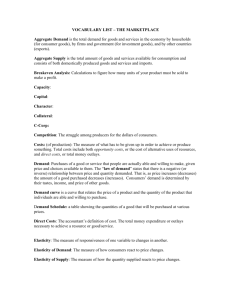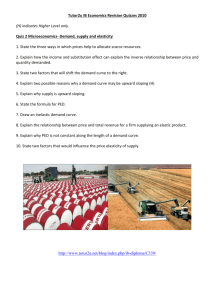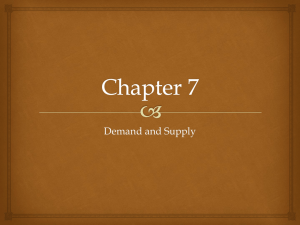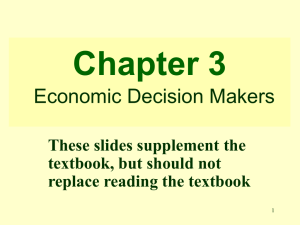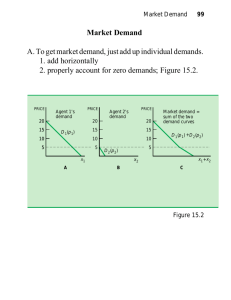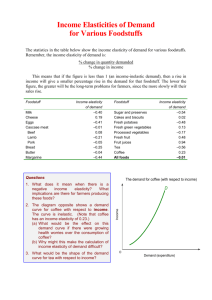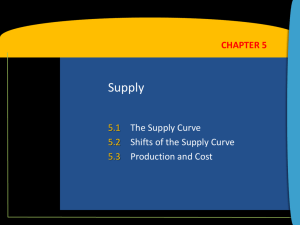Civics/Economics Final Exam Study Guide:
advertisement
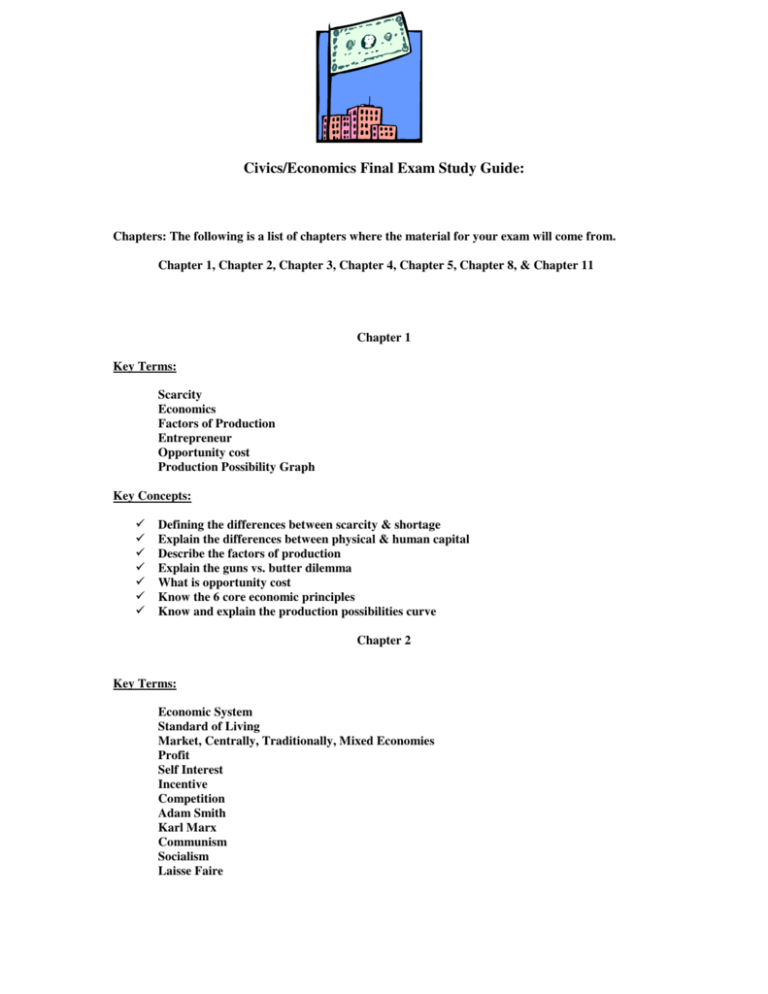
Civics/Economics Final Exam Study Guide: Chapters: The following is a list of chapters where the material for your exam will come from. Chapter 1, Chapter 2, Chapter 3, Chapter 4, Chapter 5, Chapter 8, & Chapter 11 Chapter 1 Key Terms: Scarcity Economics Factors of Production Entrepreneur Opportunity cost Production Possibility Graph Key Concepts: Defining the differences between scarcity & shortage Explain the differences between physical & human capital Describe the factors of production Explain the guns vs. butter dilemma What is opportunity cost Know the 6 core economic principles Know and explain the production possibilities curve Chapter 2 Key Terms: Economic System Standard of Living Market, Centrally, Traditionally, Mixed Economies Profit Self Interest Incentive Competition Adam Smith Karl Marx Communism Socialism Laisse Faire Key Concepts: Describe the four different types of economic systems. Know the 3 basic economic questions every society must answer. Be able to discuss the advantages and disadvantages of the different economic systems. Compare & Contrast Animal Farm with communism & socialism. Discuss the difference in economic philosophies by Adam Smith and Karl Marx. Describe the flow of market activity in a free market economic system. Chapter 3 Key Terms: Public Interest Public Disclosure Laws Safety Net Welfare Public Goods Freerider Externality Macroeconomics Microeconomics Technology Key Concepts: Discuss ways in which the government looks out for the public interest in economics. Describe different safety nets and programs the government provides to help people with economic assistance. Explain the “free rider” problem. Compare and contrast the differences between positive and negative externalities. Be able to describe how the example of externalities was illustrated in the film, “A Civil Action”. Chapter 4 Key Terms: Law of Demand Demand Schedule Substitution effect Income effect Demand curve Inferior goods Normal goods Substitutes and complements Elasticity of demand Total revenue Key Concepts: Be able to read and plot a demand schedule and demand curve. Describe the different determinants of demand and what makes the curve shift. Understand the “law of demand”. Be able to describe what elasticity of demand is. Chapter 5 Key Terms: Law of supply Supply schedule Elasticity of supply Law of diminishing marginal returns Fixed & variable cost Subsidy Excise tax Regulations Key Concepts: Be able to read and plot a supply schedule and supply curve. Describe the different determinants of supply and what makes the curve shift. Understand the “law of supply”. Be able to describe what elasticity of supply is. Understand the costs of production. Chapter 8 Key Terms: Business Organizations Sole proprietorship Partnerships (general, limited) Corporations Business Franchise Cooperative and Non Profit Organizations Key Concepts: Understand the differences between sole proprietorships, partnerships, corporations. Compare and contrast the advantages and disadvantages of sole proprietorships, partnerships, and corporations. Chapter 11 Key Terms: Investment Financial Intermediaries Mutual fund Stock Diversification Rate of Return Municipal Bond Certificates of Deposit (C.D’s) Stock exchanges NASDAQ New York Stock exchange Bull and Bear markets Stock Market crash of 1929 Buying on Margin Blue Chip stocks Penny stocks Savings accounts Security Exchange Commission (SEC) Equities Shares Stockbroker Prospectus Rule 72 Key Concepts: Understand the idea of diversification in investing. Describe how stock is issued by corporations Understand the “Pyramid of Investment Risk” Describe the differences between saving vs. investing. Be able to figure out how long it will take your money to double.



